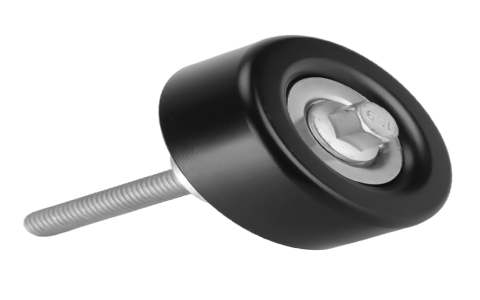Park on a level surface, engage parking brake, and open the hood. Allow the engine to cool completely before proceeding. Gather tools: 3/8" drive ratchet, breaker bar (recommended 15-18 inches), flashlight, and new serpentine belt meeting OEM specifications (e.g., 6PK2260).
Accessing Tensioner Assembly
- Locate the serpentine belt routing diagram sticker near the radiator support or hood underside. Verify routing before removal.
- Identify the spring-loaded automatic tensioner pulley between the alternator and power steering pump.
- Insert the 3/8" drive ratchet or breaker bar squarely into the tensioner's square drive lug.
Belt Removal
- Rotate the tensioner clockwise firmly using the breaker bar. This compresses the spring, releasing belt tension.
- While holding tension, slip the old belt off the closest pulley (usually the idler or tensioner pulley).
- Slowly release tensioner pressure and remove the old belt completely. Note and inspect pulley alignment during removal.
New Belt Installation
- Place the new belt over all pulleys except the tensioner pulley, matching the routing diagram precisely. Key anchor points are:
- Crankshaft pulley: Deepest groove
- Alternator: Top pulley
- Power Steering Pump: Driver's side
- Air Conditioning Compressor: Lower passenger side
- Re-engage the breaker bar on the tensioner and rotate clockwise again to create clearance.
- Slide the belt onto the tensioner pulley while maintaining tension.
Final Verification
- Gradually release tensioner pressure, ensuring the belt seats fully into every pulley groove.
- Visually confirm alignment against the routing diagram. No ribs should be off-track.
- Rotate the crankshaft pulley clockwise manually using a 22mm socket (if accessible) to check smooth movement.
Post-Installation Check
- Start the engine and observe belt operation for 2-3 minutes. Listen for chirps, squeals, or thumps indicating misalignment or tension issues.
- Inspect under load: With engine running, verify the belt tracks centrally on all pulleys without wobbling or riding off edges.

